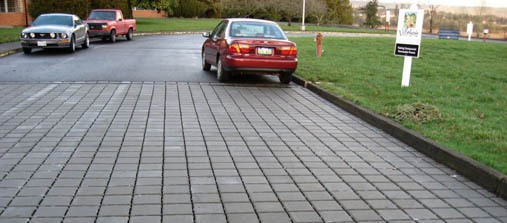Green infrastructure: pavement
As part of its Green Infrastructure Research Program, The EPA has announced that it will begin long-term testing of porous paving materials, in an effort to combat storm water runoff from streets and parking lots. Storm water from parking lots often contains grease, antifreeze, oil and other toxins that can contaminate nearby soils and bodies of water. This is particularly important in places (like New York City) that have combined sewers–where storm water mixes with untreated human and industrial waste–which tend to overflow into local harbors during heavy rains.
At its site in New Jersey, the EPA is testing three kinds of material: interlocking concrete pavers, porous concrete, and porous asphalt, as well as multiple rain gardens that naturally filter rain water. Companies at work developing types of permeable pavement include Xeripave and Vastpavers; other alternative pavement under development includes Pavegen Systems’ Energy Generating pavement, which redirects kinetic energy created by footsteps either to power nearby lights and displays or to be stored in lithium polymer batteries.
(via Scientific American and Inhabitat)





